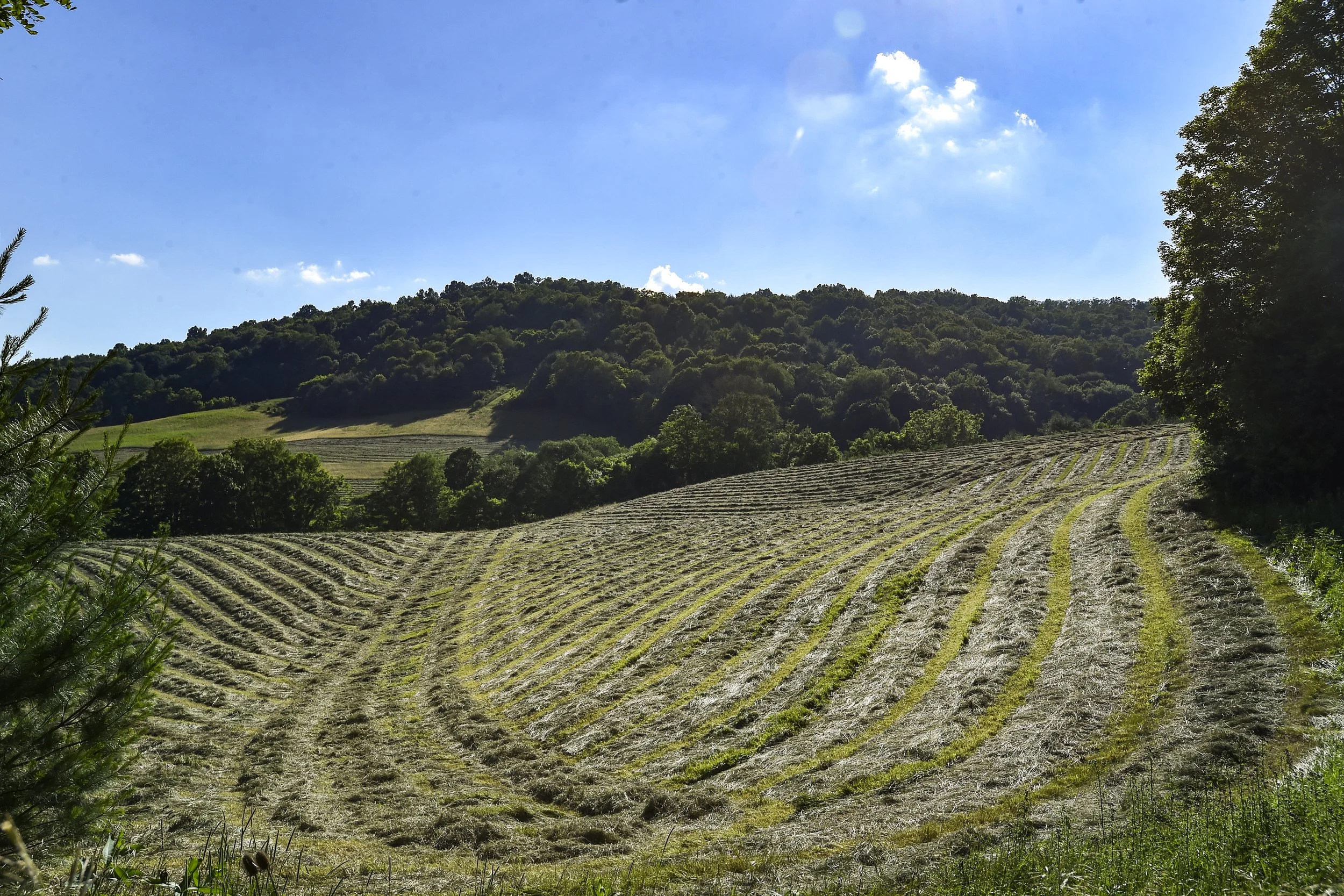
Nature-Based Hazard Mitigation Solutions
Appalachia's landscape, and its history of extraction, have made its communities uniquely vulnerable to climate-induced flooding. Human activity on the landscape – especially from coal mining, logging, and road and home construction – has impacted the region in disparate ways.
The land’s topography, with its rolling hills and mountains, means people often live adjacent to rivers or streams, where limited flat land is located. Logging and mining have reduced the land’s capacity to retain rainfall, especially where land has not been properly restored.
Restoring and protecting the landscape, including via investments in nature-based solutions, are needed to better protect Appalachian communities, and to build long-term climate resilience
“The care of the Earth is our most ancient and most worthy, and after all our most pleasing responsibility.”
-Wendell Berry, Appalachian Novelist and Environmental Advocate
Mining Impacts on Flooding
Conventional reclamation has repeatedly been shown to be ineffective at returning mined lands to their pre-mining hydrologic and ecological functionality. Often, reclamation involves a semipermanent conversion of forested land to a pasture/grassland condition. Reclaimed soils are often thinner and finer-grained to suit this purpose, lacking the necessary strength to maintain stability, reducing its infiltration rates and water storage capacities. As a result of soil and revegetation choices, computer model results have shown that reclamation can result in an almost “impervious” surface similar to those found in urban environments.
Appalachia’s history of surface mining has altered the region’s hydrology and left a need for extensive land reclamation. The Surface Mining Control and Reclamation Act (SMCRA) requires reclamation of mine sites to restore land to its original contours and to revegetate the land to restore its productivity levels. The Office of Surface Mining Reclamation and Enforcement (OSMRE) oversees SMCRA implementation, however, mine lands, even after reclamation, disrupt the hydrology of Appalachia.
Logging Impacts on Flooding
The Appalachian Mountains have long been recognized as one of the most landslide-prone regions of the U.S. The relationship between logging and landslides has been well-established in the scientific literature.
A 2006 study describes the relationship between trees and landslides on forested slopes. The study found that root strength and trees’ ability to reduce soil wetness increases slope stability. Root strength is gradually lost in the years following logging as roots decay. Studies that have directly compared landsliding in logged versus non-logged areas have shown that landslides occur 3-9 times more in logged areas.
Despite this documented relationship between logging, landslides, and precipitation events, most states throughout Appalachia do not have Best Management Practices (BMPs) for logging to reduce landslides. The U.S. Forest Service, however, can take steps to strengthen landslide reduction practices on federal lands.

Agriculture & Flood Mitigation
Sustainable agricultural practices are another type of nature-based hazard mitigation. Nearly thirty percent of land in Appalachia is devoted to agriculture, making this sector an important component of flood resiliency conversations.
Flooding affects all members of a community, but farms take a double hit with crop and soil loss, as well as other infrastructure damage. Small farms are particularly vulnerable to such climate-related disruptions. The average farm size in Appalachia is 147 acres, in contrast with the national average of 441 acres.
Increasing organic matter in soils has been shown to play a significant role in absorbing floodwaters from small and medium sized storm events. It’s estimated that every percent increase in soil organic matter helps soil hold an additional 20,000 gallons of rainfall per storm event.
Several USDA programs provide financial and technical assistance to farmers for sustainable agriculture practices, such as planting cover crops, reduced tillage, or shifting to pasture-based systems. These include the Conservation Stewardship Program (CSP) and the Environmental Quality Incentives Program (EQIP). A USDA Sustainable Agriculture Research and Education (SARE) Program study found that 90 percent of the farmers who received crop cover incentives reported that they would definitely or probably continue planting cover crops after the payments ended because they saw the value of healthier soils for farm production and soil protection.
Our Recommendations
Reclamation projects, such as the Appalachian Regional Reforestation Initiative (ARRI), have proven track records of successfully reclaiming former and active mine sites, yet have never received federally-appropriated funding. Prioritizing funding for ARRI would have similar benefits to local economies as well.
Secondly, national forests should incorporate regionally-adapted, slope stability/landslide-related best management practices (BMPs) into Forest Plans.
Lastly, increased funding for certain USDA conservation programs - such as CSP and the EQIP - would allow an expansion of services to meet increased demand, while ensuring that farming communities have the financial resources necessary to mitigate flood impacts locally.


